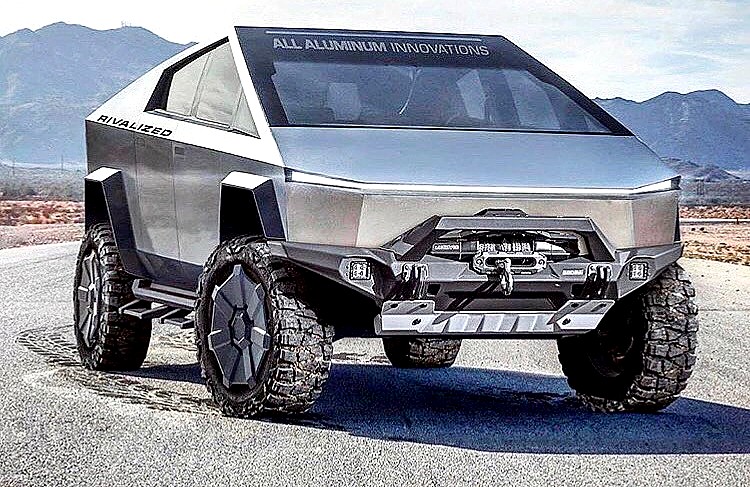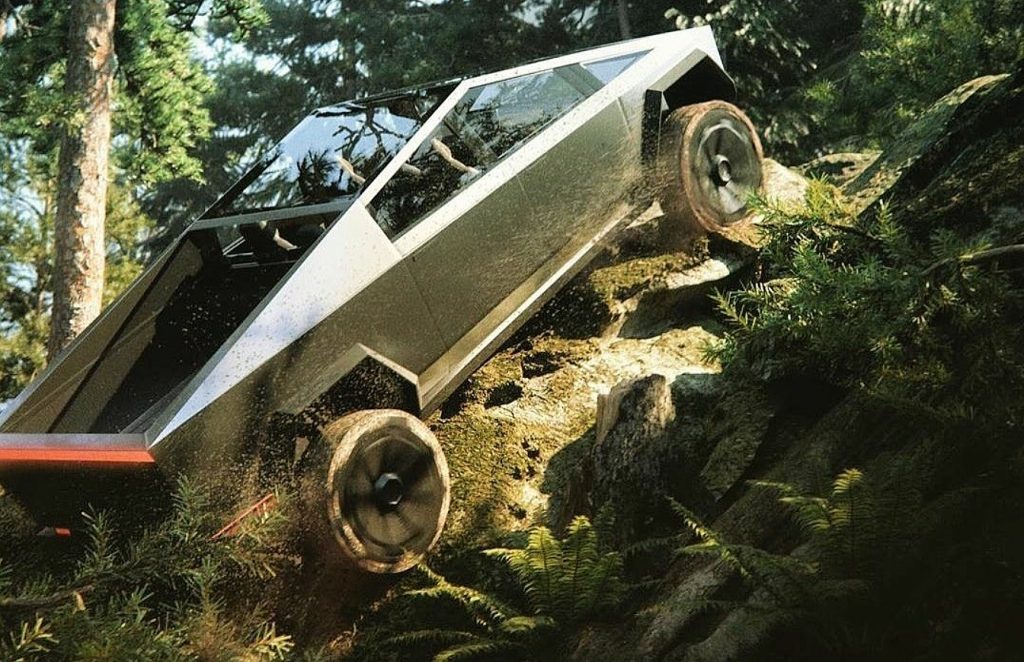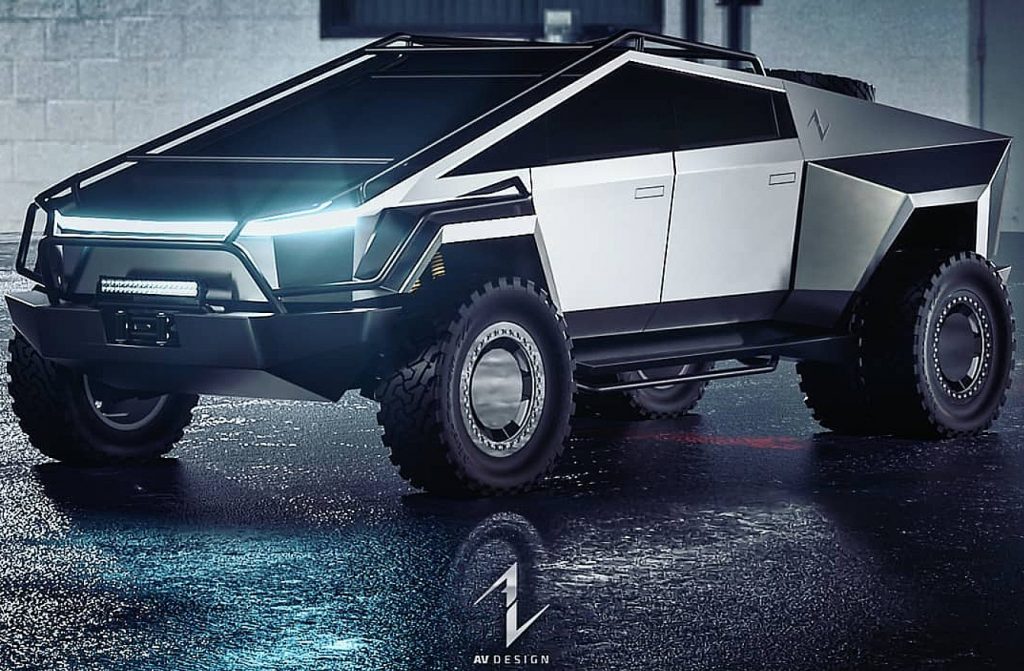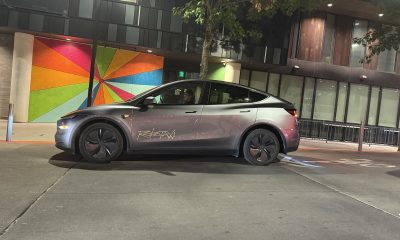

News
The Tesla Cybertruck’s tough character can help address a horrible emissions trend
An emissions problem that seems worse than Dieselgate may be brewing in the United States, and it would likely take a perception shift to battle it well. As indicated by a new federal report from the Environmental Protection Agency’s Office of Civil Enforcement, over half a million owners and operators of diesel pickup trucks in the US have been illegally disabling their vehicles’ emissions control technology during the past decade. This trend, which continues to be popular, have allowed excess emissions equivalent to around 9 million extra trucks on the road.
Intentional Emissions
The EPA’s findings in its report echo the shocking revelations of the Dieselgate scandal, which involved Volkswagen admitting to illegally installing defeat devices in millions of passenger cars worldwide to cheat emissions tests. About half a million of these vehicles were sold in the United States. Yet inasmuch as Dieselgate was shocking, what makes the EPA’s recent report quite alarming is the fact that truck owners themselves are the ones–as well as small auto shops–who are willingly installing the illegal emissions-increasing devices on their pickups.
This makes it extremely difficult to accurately measure the scope of the US pickup truck market’s emissions problem. The EPA’s report estimates that there are over half a million pickup trucks in the US equipped with emissions-increasing devices over the past decade. However, the EPA’s study only focused on devices that were installed in heavy pickup trucks like the Chevy Silverado and the Dodge Ram 2500, which weigh between 8,500 to 14,000 pounds. Considering that some owners of smaller trucks like the Ford Ranger may also be engaged in the same practice, there is a good chance that the US’ pickup truck emissions problem may very well be far bigger, involving millions of vehicles nationwide.
“One reason it is difficult to estimate the full extent of tampering nationwide is that the Air Enforcement Division has reason to believe this conduct occurs within most or all categories of vehicles and engines, including commercial trucks, passenger vehicles, pickup trucks, motorcycles, forestry equipment, and agricultural equipment,” the report read.

Worse than Dieselgate
According to the report, the modifications that “diesel tuners” in the US place in pickup trucks could result in the release of over 570,000 tons of nitrogen dioxide, a substance associated with diseases like heart and lung disease, over the lifetime of the vehicles. This is more than 10x the excess nitrogen oxide emissions attributed to Volkswagen’s Dieselgate vehicles that were sold in the United States. The report further stated that the modified pickup trucks will hit 5,000 excess tons of industrial soot over their lifetime. Industrial soot, also known as particulate matter, is linked to respiratory diseases and higher death rates for COVID-19 patients.
John Walke, an expert in air pollution law at the Natural Resources Defense Council, noted in a statement to The New York Times that the EPA’s findings came at the worst time possible. “A global respiratory pandemic is the worst time to find out that there is this massive cheating by the makers of these devices. That is an astronomically high level of smog-forming pollution. It’s happening at ground level where people are breathing the fumes. And if the problem extends to other vehicles it’s almost unimaginable what the health impact will be,” he said.
Phillip Brooks, a former EPA emissions investigator and a veteran of the Dieselgate case, shared his thoughts on the US pickup truck market’s budding emissions controversy. “The aftermarket defeat device problem is huge. A lot of people just don’t understand what the problem is — your average person buys a vehicle and says, it’s my vehicle, I can do what I want with it. They may not even be aware that these devices are illegal,” he said. “But the real question is impact. If 10 people do it, there’s no impact. But these are numbers that are meaningful for air quality. This is not a great way to express how to be a free American, but there are a lot of people out there who think that way.”

The Need for a Diesel Pickup Predator
To battle such a horrible emissions trend, a change of perception is needed that is not that different from what the Model S ushered in for the high-performance sedan market. Diesel tuners, after all, equip vehicles with illegal emissions-increasing equipment largely to improve a pickup truck’s performance. If a vehicle were to be introduced in the pickup truck market that is so far ahead in durability, power, and performance compared to the veterans of the pickup segment, then large diesels could end up going the way of horse-drawn buggies. There are few vehicles that are better at leading this charge than the Tesla Cybertruck.
Similar to the next-generation Roadster, the Tesla Cybertruck has the potential to be a “smackdown” of sorts to the diesel pickup truck market. It’s a large vehicle with a domineering stance designed to look like a futuristic armored personnel carrier. Avid diesel aficionados tend to poke fun at EVs due to their tame, sleek, looks. There’s nothing of that in the all-electric pickup. The Cybertruck, with its XY, origami-like exoskeleton, is a steel beast: tough, unapologetic, and it looks like something that even a large diesel truck should not cross. This trend continues to the Cybertruck’s performance and utility, with its 0-60 mph time of 2.9 seconds, its 6.5-foot truck bed, its 14,000-lb towing capacity, and 500+ miles of range.
Assuming that Tesla does release the Cybertruck with specs that meet those that were announced during the vehicle’s unveiling, the all-electric pickup could utterly outperform diesel rivals to such a degree that it would be embarrassing for traditional trucks to stand toe-to-toe against the steel monster. And once this is established, perhaps the time would soon come when diesel-powered modified trucks could become laughable in the face of superior vehicles that just happen to have zero emissions. Such a time, while unfortunate for the US’ long history of large diesel trucks, would likely be appreciated by the environment and the populace as a whole.
Read the EPA’s report on tampered US pickup trucks and their emissions below.
EPA-US Emissions Scandal Pickup Trucks by Simon Alvarez on Scribd
Elon Musk
Tesla investors will be shocked by Jim Cramer’s latest assessment
Jim Cramer is now speaking positively about Tesla, especially in terms of its Robotaxi performance and its perception as a company.

Tesla investors will be shocked by analyst Jim Cramer’s latest assessment of the company.
When it comes to Tesla analysts, many of them are consistent. The bulls usually stay the bulls, and the bears usually stay the bears. The notable analysts on each side are Dan Ives and Adam Jonas for the bulls, and Gordon Johnson for the bears.
Jim Cramer is one analyst who does not necessarily fit this mold. Cramer, who hosts CNBC’s Mad Money, has switched his opinion on Tesla stock (NASDAQ: TSLA) many times.
He has been bullish, like he was when he said the stock was a “sleeping giant” two years ago, and he has been bearish, like he was when he said there was “nothing magnificent” about the company just a few months ago.
Now, he is back to being a bull.
Cramer’s comments were related to two key points: how NVIDIA CEO Jensen Huang describes Tesla after working closely with the Company through their transactions, and how it is not a car company, as well as the recent launch of the Robotaxi fleet.
Jensen Huang’s Tesla Narrative
Cramer says that the narrative on quarterly and annual deliveries is overblown, and those who continue to worry about Tesla’s performance on that metric are misled.
“It’s not a car company,” he said.
He went on to say that people like Huang speak highly of Tesla, and that should be enough to deter any true skepticism:
“I believe what Musk says cause Musk is working with Jensen and Jensen’s telling me what’s happening on the other side is pretty amazing.”
Tesla self-driving development gets huge compliment from NVIDIA CEO
Robotaxi Launch
Many media outlets are being extremely negative regarding the early rollout of Tesla’s Robotaxi platform in Austin, Texas.
There have been a handful of small issues, but nothing significant. Cramer says that humans make mistakes in vehicles too, yet, when Tesla’s test phase of the Robotaxi does it, it’s front page news and needs to be magnified.
He said:
“Look, I mean, drivers make mistakes all the time. Why should we hold Tesla to a standard where there can be no mistakes?”
It’s refreshing to hear Cramer speak logically about the Robotaxi fleet, as Tesla has taken every measure to ensure there are no mishaps. There are safety monitors in the passenger seat, and the area of travel is limited, confined to a small number of people.
Tesla is still improving and hopes to remove teleoperators and safety monitors slowly, as CEO Elon Musk said more freedom could be granted within one or two months.
News
Tesla launches ultra-fast V4 Superchargers in China for the first time
Tesla has V4 Superchargers rolling out in China for the first time.

Tesla already has nearly 12,000 Supercharger piles across mainland China. However, the company just initiated the rollout of the ultra-fast V4 Superchargers in China for the first time, bringing its quick-charging piles to the country for the first time since their launch last year.
The first batch of V4 Superchargers is now officially up and running in China, the company announced in a post on Chinese social media outlet Weibo today.
The company said in the post:
“The first batch of Tesla V4 Superchargers are online. Covering more service areas, high-speed charging is more convenient, and six-layer powerful protection such as rain and waterproof makes charging very safe. Simultaneously open to non-Tesla vehicles, and other brands of vehicles can also be charged. There are more than 70,000 Tesla Superchargers worldwide. The charging network layout covers 100% of the provincial capitals and municipalities in mainland China. More V4 Superchargers will be put into use across the country. Optimize the charging experience and improve energy replenishment efficiency. Tesla will accompany you to the mountains, rivers, lakes, and seas with pure electricity!”
The first V4 Superchargers Tesla installed in China are available in four cities across the country: Shanghai, Zhejiang, Gansu, and Chongqing.

Credit: Tesla China
Tesla has over 70,000 Superchargers worldwide. It is the most expansive and robust EV charging network in the world. It’s the main reason why so many companies have chosen to adopt Tesla’s charging connector in North America and Europe.
In China, some EVs can use Tesla Superchargers as well.
The V4 Supercharger is capable of charging vehicles at speeds of up to 325kW for vehicles in North America. This equates to over 1,000 miles per hour of charging.
Elon Musk
Elon Musk hints at when Tesla could reduce Safety Monitors from Robotaxi
Tesla could be reducing Safety Monitors from Robotaxi within ‘a month or two,’ CEO Elon Musk says.

Elon Musk hinted at when Tesla could begin reducing Safety Monitors from its Robotaxis. Safety Monitors are Tesla employees who sit in the front passenger seat during the driverless rides, and are there to ensure safety for occupants during the earliest rides.
Tesla launched its Robotaxi fleet in Austin last Sunday, and after eight days, videos and reviews from those who have ridden in the driverless vehicles have shown that the suite is safe, accurate, and well coordinated. However, there have been a few hiccups, but nothing that has put anyone’s safety in danger.
A vast majority — close to all of the rides — at least according to those who have ridden in the Robotaxi, have been performed without any real need for human intervention. We reported on what was the first intervention last week, as a Safety Monitor had to step in and stop the vehicle in a strange interaction with a UPS truck.
Watch the first true Tesla Robotaxi intervention by safety monitor
The Tesla and UPS delivery truck were going for the same street parking space, and the Tesla began to turn into it. The UPS driver parallel parked into the spot, which was much smaller than his truck. It seemed to be more of an instance of human error instead of the Robotaxi making the wrong move. This is something that the driverless cars will have to deal with because humans are aggressive and sometimes make moves they should not.
The Safety Monitors have not been too active in the vehicles. After all, we’ve only seen that single instance of an intervention. There was also an issue with the sun, when the Tesla braked abnormally due to the glare, but this was an instance where the car handled the scenario and proceeded normally.
With the Robotaxi fleet operating impressively, some are wondering when Tesla will begin scaling back both the Safety Monitors and Teleoperators that it is using to ensure safety with these early rides.
CEO Elon Musk answered the inquiry by stating, “As soon as we feel it is safe to do so. Probably within a month or two.”
As soon as we feel it is safe to do so.
Probably within a month or two. We continue to improve the Tesla AI with each mile driven.
— Elon Musk (@elonmusk) June 30, 2025
Musk’s response seems to confirm that there will be fewer Teleoperators and Safety Monitors in the coming months, but there will still be some within the fleet to ensure safety. Eventually, that number will get to zero.
Reaching a point where Tesla’s Robotaxi is driverless will be another significant milestone for the company and its path to fully autonomous ride-sharing.
Eventually, Tesla will roll out these capabilities to consumer-owned vehicles, offering them a path to generate revenue as their car operates autonomously and completes rides.
For now, Tesla is focusing on perfecting the area of Austin where it is currently offering driverless rides for just $4.20 to a small group of people.
-

 News5 days ago
News5 days agoTesla Robotaxi’s biggest challenge seems to be this one thing
-

 News2 weeks ago
News2 weeks agoTesla confirms massive hardware change for autonomy improvement
-

 Elon Musk2 weeks ago
Elon Musk2 weeks agoElon Musk slams Bloomberg’s shocking xAI cash burn claims
-

 News2 weeks ago
News2 weeks agoTesla China roars back with highest vehicle registrations this Q2 so far
-

 News2 weeks ago
News2 weeks agoTesla features used to flunk 16-year-old’s driver license test
-

 News2 weeks ago
News2 weeks agoTesla dominates Cars.com’s Made in America Index with clean sweep
-

 News2 weeks ago
News2 weeks agoTexas lawmakers urge Tesla to delay Austin robotaxi launch to September
-

 News2 weeks ago
News2 weeks agoTesla’s Grok integration will be more realistic with this cool feature


















